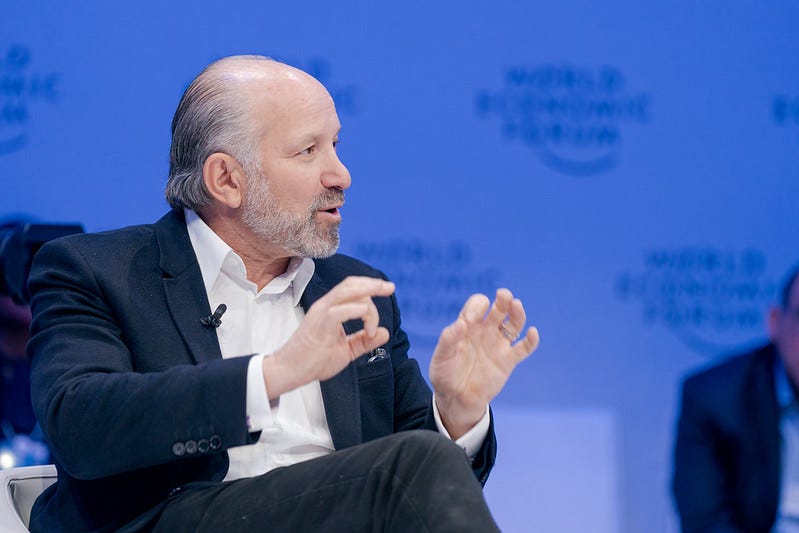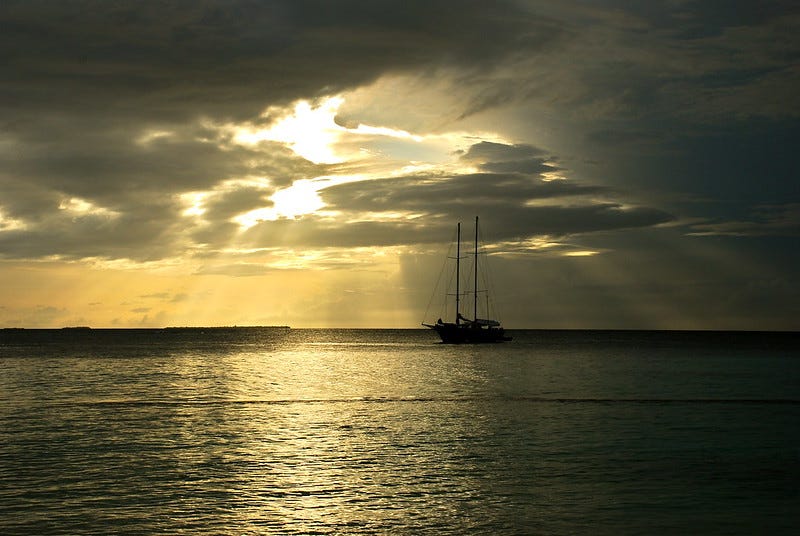To almost nobody's surprise, COP29 heads for failure
Lack of detailed financing agreement imperils entire climate summit process
Today’s edition of Callaway Climate Insights is free for all our readers. We really want to bring you the best and latest in climate finance from around the world. Please subscribe now.

Climate investors and advocates who decided to give COP29 in Azerbaijan a skip this year can rest assured they missed nothing, as the process ground to an inevitable disappointing conclusion this week with no agreement on either financing for poorer countries or a deal to transition away from fossil fuels.
While it’s likely that some sort of face-saving communique will come about over the weekend that allows climate delegates to go home with something, the lack of agreement on a specific goal for financing imperils the entire process of the annual United Nations summits.
After almost 30 years now of these summits with only one or two real breakthroughs, such as the Paris Agreement of 2015, it’s time the UN and the largest polluting countries come up with a better idea than global consensus. There are just too many diverging agendas to make that work. Even the goals of the Paris deal, as exciting as they were to announce a decade ago, haven’t come remotely close to being achieved.
The COP process will now limp into Brazil next year for its 30th anniversary amid calls for reform, especially among those who want the fossil fuel interests to play less of a role. Finger-pointing already started in Baku earlier today in a five-hour plenary debate that was characterized by anger and blame giving.
In the meantime, investors and entrepreneurs will continue to develop ideas to create more efficient and inexpensive renewable energy, with side deals between countries laying the groundwork for transition. It’s a process that’s been going on for a decade now and is yielding results, just not at the geopolitical level and not fast enough. . . .
Don’t forget to contact me directly if you have suggestions or ideas dcallaway@callawayclimateinsights.com.
Follow us . . . .
Twitter | LinkedIn | Facebook | Instagram
Zeus: Howard Lutnick and the battle for Trump's climate agenda

. . . . President-elect Donald Trump’s nomination of Wall Street veteran Howard Lutnick for commerce secretary might look like a consolation prize for not getting Treasury, but actually it positions Lutnick to have vital control of Trump’s climate agenda, writes David Callaway. Whoever joins Trump’s second-term cabinet will face a brutal and likely fleeting competition with other cabinet members as everyone vies for the chief’s affections, if the first term is anything to go by. But Lutnick will have leeway over Trump’s tariff plans as well as control of the weather and climate science agencies that Trump despises.
Thursday’s subscriber insights
Cable sabotage in Baltic Sea has Europe gearing up for new energy war
. . . . Suspected sabotage in the severing of two undersea communications cables in the Baltic Sea this week has heightened concerns about a new type of war in Europe, with officials in Finland and Sweden already informing citizens to be prepared for a crisis.
The two cables, one from Germany to Finland and one from Lithuania to Sweden, were cut in separate incidents, but government and military officials immediately suspected Russia after it lowered its threshold for the use of nuclear weapons in the past few days.
The incidents raised eyebrows because officials still haven’t solved the mystery of who damaged important Nord Stream 2 gas pipelines from Russia to Germany in 2022. Authorities suspect either Ukraine or Russia in the sabotage, which helped dramatically raise energy prices across Europe.
Attacks on pipelines, cables, and electric grids would herald a new form of warfare and cause ripple effects across national energy markets. Much has been written about waging war on electric grids, but to date no major incidents have occurred outside of Ukraine.
The Ukrainian government has been able to keep power on despite Russia’s attack on its energy installations by breaking up the grid and responding with rapid deployment of renewable energy when needed to keep the lights on. Any country considering its own defenses in an energy war would do well to study Ukraine’s responses.
The latest sabotage may be isolated but coming along with rising tension between the West and Russia it’s got European governments worried. How individual countries would be prepared for similar attacks should be looked at by all energy strategists, especially as winter arrives.
Editor’s picks: Severe drought and fires on the East Coast
Watch the video: For years, wildfires across the American West have served as an urgent reminder of the threat posed by extreme weather, often made worse by climate change. But over the past few weeks, fires have engulfed parts of New York and New Jersey amid an unusually severe drought on the East Coast. Hilary Howard, a climate change reporter for The New York Times, joins William Brangham, from PBS NewsHour, to discuss.
Future of tourism depends on sustainability
While COP29 negotiators struggle to forge a climate finance deal in their last hours in Baku, Azerbaijan, at least 50 nations have agreed on one thing: Tourism around the world should be more climate friendly. Reuters reports the countries that signed the declaration on Enhanced Climate Action on Tourism have pledged to recognise the need to address tourism when drafting climate plans. “At COP29 we have achieved today an historic milestone by being included in the UN Climate Change Conference Action Agenda for the first time,” U.N. Executive Director for Tourism Zoritsa Urosevic told a news conference.
Latest findings: New research, studies and projects
Underestimating physical climate risks
Companies and investors are clearly underestimating or are simply unaware of the growing physical climate risks caused by climate change, writes Ron Bundy, president, Morningstar Sustainalytics & Morningstar Indexes. In a recent report, Bundy says, “Our Morningstar research shows that 83% of U.S.-based issuers covered by our Physical Climate Risk Metrics data product have at least one real estate asset at high risk of physical risks in 2050. Our research also shows that 6.5% of U.S.-based companies have over 10% of their real estate assets in high physical risk areas.” Additionally, the report states that “the steady onset of global warming is creating disruption and change in how we live our lives. It’s also affecting the ability of investors to properly gauge the material financial risks — and opportunities — related to climate change. Read more in Taking a Forward Look on Climate Investing.
More of the latest research:

Words to live by . . . .
“As we look around the globe, we see funds flowing freely to wage war but scrutinized when it’s for climate adaptation. We need to reprioritize, revise the international financial system. We must choose the path that changes lives, not the climate.” — Mohamed Muizzu, president of the Maldives, speaking at COP29




Ron Bundy's essay was very good. I often get the impression businessmen don't understand the consequences of weather, or climate change. What they seem to like best is low expenses and high profits. Taking a forward look only seems to include those two options or their reverse and has nothing to do with the minimum of climate. If businessmen would consider climate and what has been done to mitigate climate change, they would consider California, which has already hit the 2030 goals. In Alameda County, where I live (in the Bay Area) climate change is at the top of the development agenda, right ahead of earthquakes, natural disasters which give no advance warning. The Southeast has received lots of warnings, but is never prepared. San Francisco, on the other hand, has prepared for earthquakes by putting the new buildings on rollers. For climate change, the top 20 LEED buildings are in California, most of them in the Bay Area. California is expensive, but you can pay up front or suffer the consequences and pay more later. In my own small house, we bolted the house to the foundation in 1993. We put solar on the roof in 2016, and now drive an EV.
I wish I could write as well as Mr. Bundy and I hope everyone pays serious attention to his last paragraph.